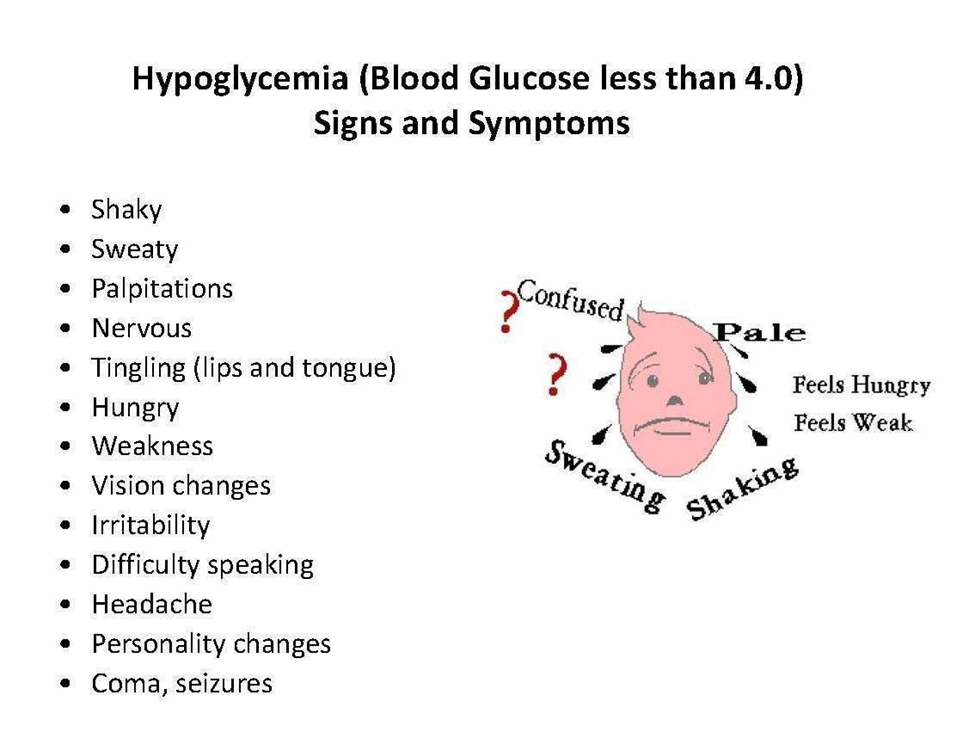A nurse is assessing a client diagnosed with diabetes mellitus. Which of the following findings is a manifestation of hypoglycemia?
Tremors
Bradycardia
Vomiting
Fruity odour on the client’s breath
The Correct Answer is A
A. Tremors:
Tremors or shaking is a common symptom of hypoglycemia. When blood glucose levels drop too low, the body reacts by releasing hormones like adrenaline, leading to symptoms such as tremors, shakiness, and palpitations.
B. Bradycardia:
Bradycardia, or a slow heart rate, is not typically associated with hypoglycemia. Instead, hypoglycemia tends to stimulate the release of adrenaline, which can increase heart rate.
C. Vomiting:
Vomiting is not a classic manifestation of hypoglycemia. Nausea may occur, but vomiting is more commonly associated with conditions such as hyperglycemia or diabetic ketoacidosis.
D. Fruity odor on the client’s breath:
A fruity odor on the breath is more commonly associated with diabetic ketoacidosis (DKA) in individuals with diabetes mellitus, particularly when there is an accumulation of ketones in the body. It is not a typical manifestation of hypoglycemia.

Nursing Test Bank
Naxlex Comprehensive Predictor Exams
Related Questions
Correct Answer is D
Explanation
A. Provide oral hygiene.
Providing oral hygiene is important for the client's comfort and overall well-being. However, in the context of acute pancreatitis, the immediate priority is to address the gastrointestinal symptoms and prevent further pancreatic stimulation.
B. Assist the client to a side-lying position.
Assisting the client to a side-lying position can be beneficial for comfort and may help prevent complications such as aspiration. However, it is not the immediate priority after treating the pain. Withholding oral fluids and food takes precedence in the initial management of acute pancreatitis.
C. Auscultate the client's lungs.
Auscultating the client's lungs is a routine nursing assessment and is important for respiratory monitoring. However, in the context of acute pancreatitis, the primary focus is on addressing gastrointestinal symptoms, and respiratory assessment becomes more critical if respiratory distress is suspected.
D. Withhold oral fluids and food.
Withholding oral fluids and food is the priority intervention after treating the pain in acute pancreatitis. This is done to reduce pancreatic stimulation, allowing the pancreas to rest and recover. NPO (nothing by mouth) status is often initiated in the early management of acute pancreatitis.

Correct Answer is B
Explanation
A. Level of consciousness:
While assessing the client's level of consciousness is important, it is not the top priority after an EGD procedure unless there are specific signs of neurological distress. Monitoring for signs of sedation or anesthesia recovery is typically part of post-procedure care.
B. Gag reflex:
This is the correct answer. The nurse should prioritize assessing the gag reflex, as the procedure involves passing a flexible tube through the mouth and down the esophagus. Ensuring the return of the gag reflex is essential to prevent aspiration and ensure the client's safety.
C. Pain:
Pain assessment is important, but it is usually addressed after confirming airway protection and ensuring the absence of complications such as bleeding or perforation.
D. Nausea:
While nausea is a possible post-procedure symptom, assessing the gag reflex and monitoring for signs of complications take precedence over managing nausea in the immediate post-procedure period.
Whether you are a student looking to ace your exams or a practicing nurse seeking to enhance your expertise , our nursing education contents will empower you with the confidence and competence to make a difference in the lives of patients and become a respected leader in the healthcare field.
Visit Naxlex, invest in your future and unlock endless possibilities with our unparalleled nursing education contents today
Report Wrong Answer on the Current Question
Do you disagree with the answer? If yes, what is your expected answer? Explain.
Kindly be descriptive with the issue you are facing.
